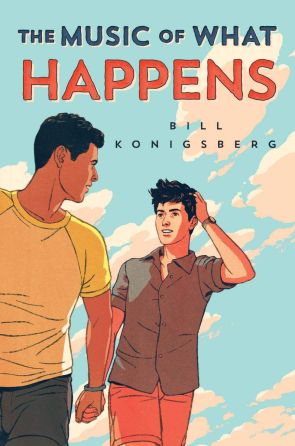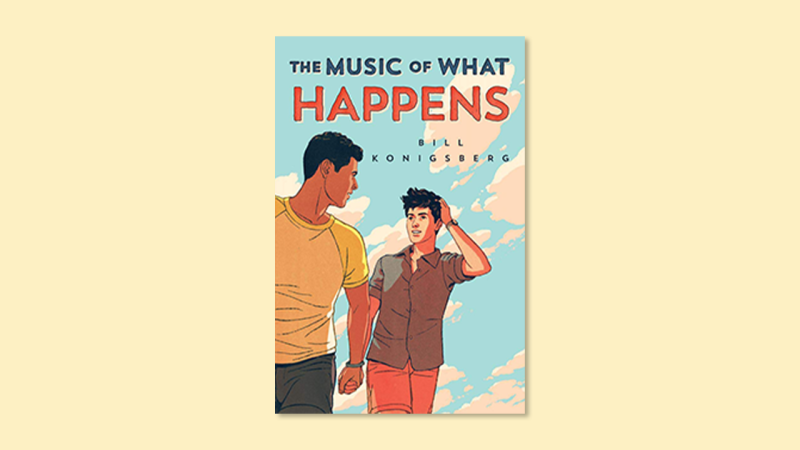The Music of What Happens by Bill Konigsberg, a young adult novel that is also one of the featured titles from Scholastic’s #ReadWithPride campaign, is the story of two boys, Max and Jordan, who fall in love one summer in Arizona while working on a food truck. The boys start from scratch, researching videos online about foods to sell in the truck and how to prepare them safely, coming up with their own original ideas, prepping the truck and grill, and working and sweating beneath the hot Arizona sun. Their motivation to succeed is what bonds them, though they both handle their triumphs and failures differently.
Ultimately, The Music of What Happens is a love story. But what’s hiding underneath? What is the book really about, other than love?
“The book says a lot about toxic masculinity,” says Bill. “And how the messages of what it means to be a man fall on gay boys in particular.” In the book, Max, who is an athlete and has a group of traditionally masculine guy friends, and who is referred to quite literally as a “dude bro,” has a difficult time displaying negative emotions like sadness or fear. Expressing those emotions means being vulnerable, and vulnerability is a rejection of the traditional masculinity that is the foundation of society. Max tries to find a balance between the two, but it leads to him having a hard time expressing how he really feels. Jordan on the other hand, who Bill says is “more stereotypically gay and more sensitive,” has internalized the idea that he is less of a man because of who he is, feels insecure about putting himself out there, and lets people walk all over him.
“The Music of What Happens is about two boys healing each other and helping each other move to a more healthy place of balance when it comes to masculinity and vulnerability,” says Bill.
Bill believes in the importance of providing stories and context for talking to young men and boys about emotions, and how to deal with those emotions. “Stories like this matter because I don’t think there’s enough out there about gay boys and what gay male identity is yet,” says Bill. “I personally think these are questions of great importance for young people of all backgrounds to think about. What does it mean to be a man? What does it mean to be a gay man? How do we wear those labels? How about feminine energy? How do boys and men come to understand the sacred feminine which is inside all of us, too?”
Bill explores the answers to these questions with the dimensionality of Max and Jordan’s characters, as well as throughout their relationship. Jordan has trouble communicating with Max at first, because he’s scared of what he’ll think of him if he’s truly himself. Max isn’t afraid to step down from a challenge, but at the same time badgers himself in private for not being what he considers “a real man.”
Both of the boys are so different in how they embrace and reject being vulnerable and themselves, and oftentimes their actions because of their insecurities were emphasized by the actions of the other. “Writing The Music of What Happens was an exercise in healing myself and finding the masculinity that feels to me more healthy and balanced,” says Bill.
“I know that underneath whatever I am doing, one excellent outcome of this book will be representation and helping young LGBTQIA+ people feel seen, and helping them navigate situations in their own lives,” says Bill. But when it comes to LGBTQIA+ literature, Bill wishes that more existed when he was a teenager. “I was so starved for reading material that would allow me to see myself clearly, and what is so amazing to me is how much of the same heart so many LGBTQ young adult novels have,” he continues. “To have read one such book would have been immeasurably powerful for me as a young person. I think the great thing is that now we have enough books out there that writers of young adult LGBTQIA+ fiction can dive deeper into more specific issues and know that these elemental aspects of LGBTQIA+ fiction will shine through, too.”



